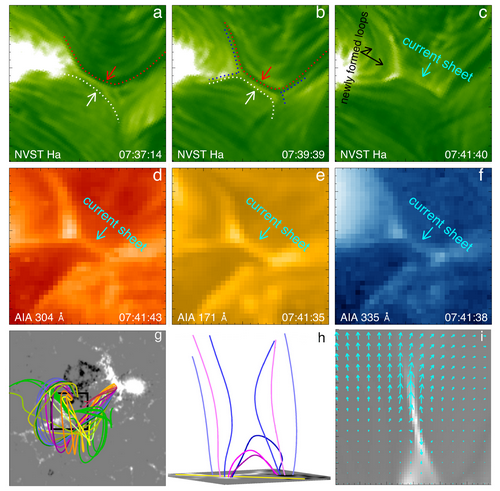The research article “Observing the release of twist by magnetic reconnection in a solar filament eruption”, jointly written by Yunnan Observatories of Chinese Academy of Sciences (CAS), National Astronomical Observatories of CAS, Nanjing University, Purple Mountain Observatory of CAS, and University of Potsdam, was published online in Nature Communicationson on June 16, 2016.
Employing the high temporal and spatial resolution Hα observations from the New Vacuum Solar Telescope, UV and EUV images, and vector magnetograms observed by SDO, as well as the X-ray data from Hinode and GOES, scientists study in detail the process of the magnetic reconnection during a filament eruption in active region 12178 on 2014 October 03. The scientists find that the magnetic reconnection occurs between the filament threads and the chromospheric fibrils, and report for the first time that the twist in the filament is released quickly by the magnetic reconnection. Meanwhile, almost all the observational evidences of magnetic reconnection are detected in this event, including reconnection inflows and outflows, current sheet, hot cusp-liked structures, newly formed magnetic loops and shrinking of the loops, and so on. The estimated reconnection rate is consistent with the values of the theoretical expectations. In addition, the change of magnetic structures is also reproduced through both the nonlinear force-free field modelling of the active region and the magnetohydrodynamic simulation. These results further confirm the occurrence of the magnetic reconnection during the filament eruption and the release process of the twist in the filament by the magnetic reconnection.

Fig. 1: The filament threads and chromospheric fibrils are indicated by red and white arrows respectively in panels (a) and (b). The current sheet forming in magnetic reconnection is marked by the cyan arrows in panels (c)-(f). The results of magnetohydrodynamic simulation reproducing the magnetic reconnection during the filament eruption are presented in panels (g)-(i).













